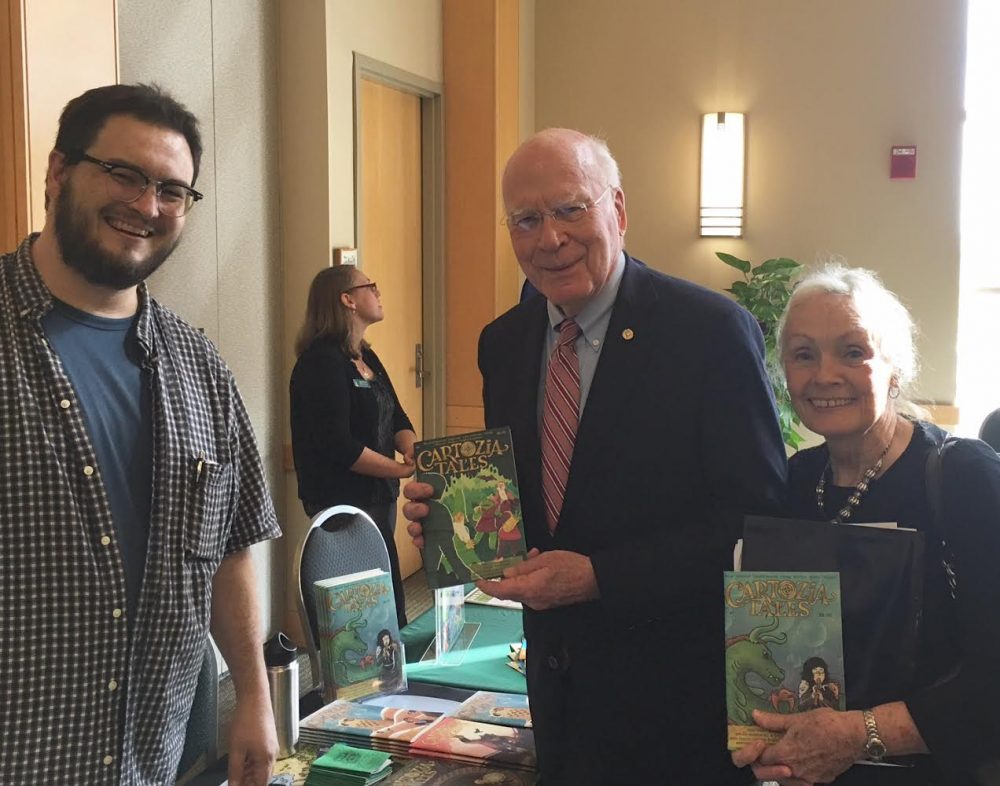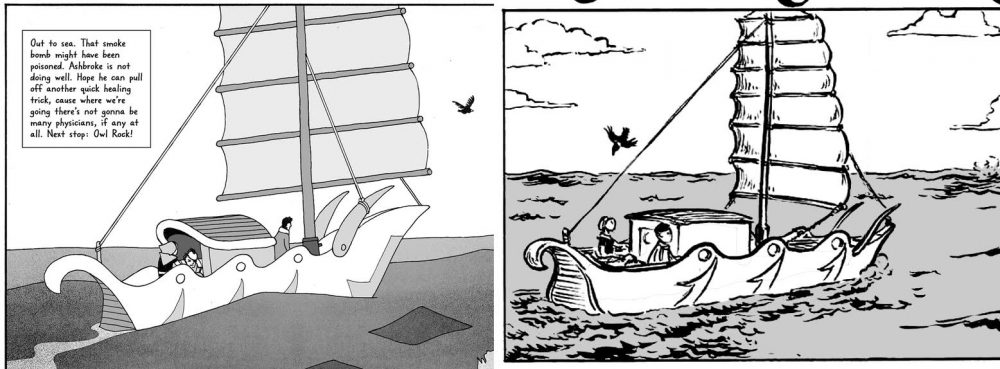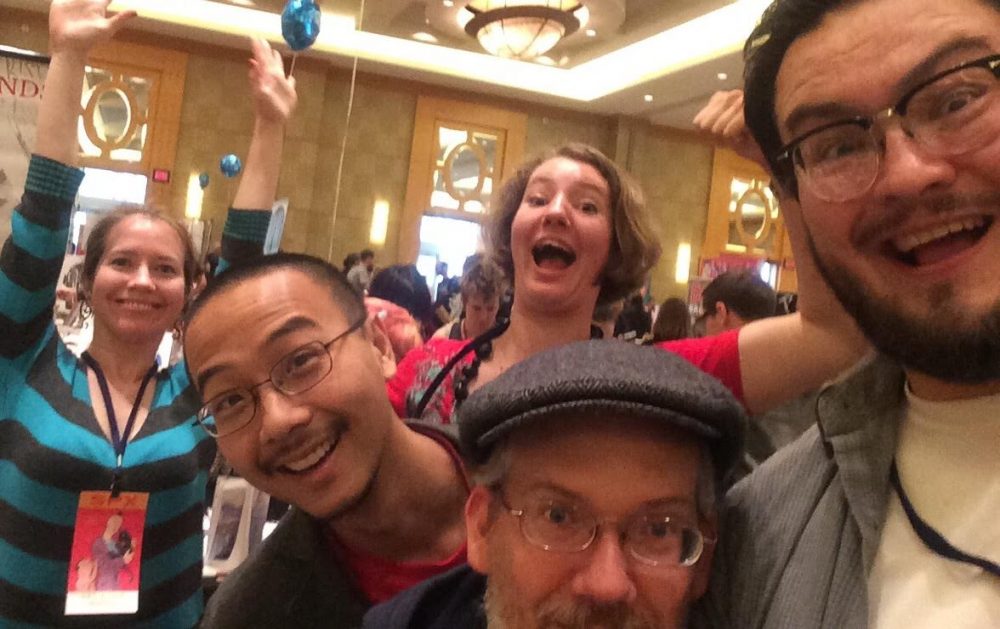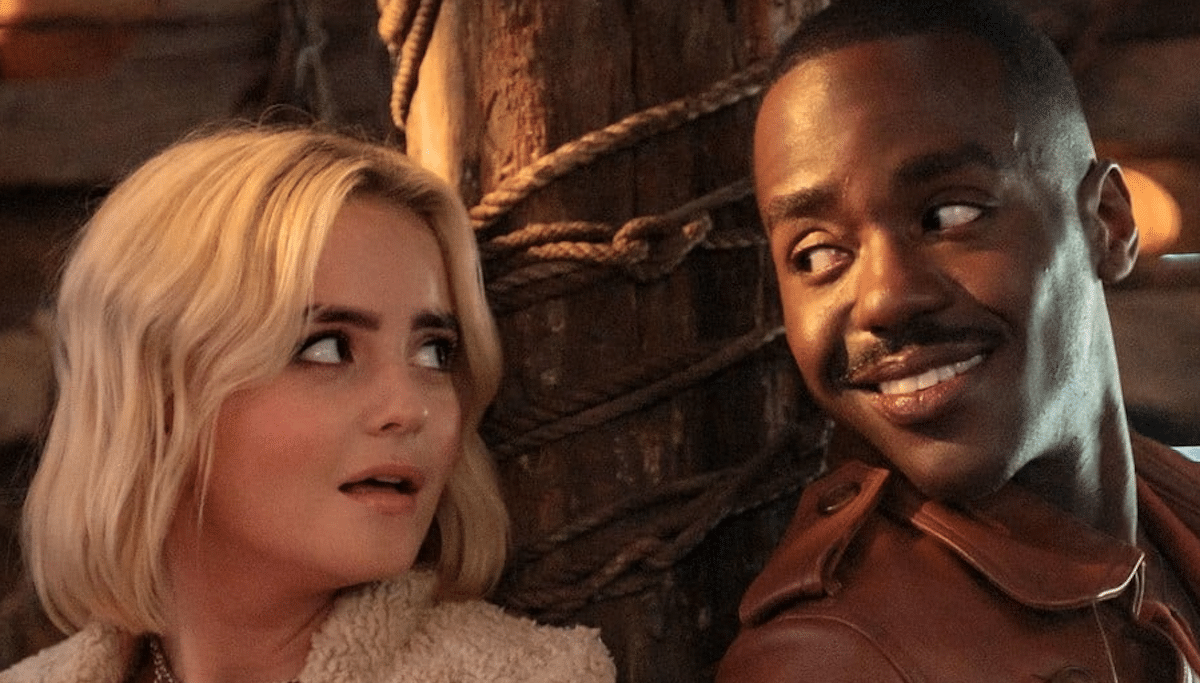The tiny indie comic that could has grown in readers and especially in volume. Hundreds upon hundreds of pages have been written, drawn, and lettered to shape an imaginary place of wonder named Cartozia. That kind of output takes immense passion, work, and diligence, and the person who has most embodied those traits is Isaac Cates, the man behind the magic.
Organizing a project as immense as Cartozia Tales, a publication with dozens of contributors and rotating storylines in each issue to create something that feels like a cohesive whole, is a challenge few people could handle. I spoke with Cates about the project he’s so dedicated to and the ups and downs that have come with it.
NOTE: You can check out my previous interview with Cates HERE.

What’s currently happening with Cartozia Tales?
We’re working on our tenth and final issue. This has been a new sort of challenge for the team, especially for me, because up to this point our stories have been pretty much entirely improvised by whoever was drawing them, without a lot of top-down control.
But there are ongoing plots in Cartozia Tales that have developed over the first nine issues that need to be concluded in this one, so I’ve had to solve a sort of complicated narrative puzzle: how do we clean up the problem of the Miasma, a worldwide ecological disaster, in a way that’s not too easy, nor too contrived, and that involves all the characters and stories that have been leading in that direction?
I think we’ve got something that’ll feel like a real conclusion — something that the stories will seem to have been building up to all along, even though it’ll be a surprise.
Want a hint about part of the surprise? We gave one to the readers in our ninth issue, and you can see that HERE.
I think it’s remarkable that issues of Cartozia keep coming out, even given delays. You have to juggle contributions from a large number of artists, get it printed! and distributed it. How do you manage it all?
Putting the comic together is really fun! That’s the main answer, honestly. We’ve put our hearts into these characters and this world, and we really enjoy bringing them to life — even though we’re usually handling a given set of characters for the first time in each issue.
And if it’s ever a matter of me staying up late to stuff envelopes or staple minicomics, I just throw on a podcast and think about the kids and grownup fans who’ll be opening those envelopes, and the time breezes by. All of the work pays off when the books get into people’s hands.
My day job teaching at UVM has me grading a lot of undergraduate papers most of the time — in fact, an extra load of paper-grading and class prep has slowed things down at Cartozia HQ this semester — and planning or drawing a story, wrangling editorial details or even shipping orders is a nice change of pace.
But I’d be lying if I said running the series is all easy. I’m actually a little, um, behind on my payments to the print shop right now. I worry about that sometimes. The book isn’t printed cheaply, and the series is big enough that it still may need to wreck my finances pretty thoroughly to get the tenth issue out. I mean, I just need to sell more bundles and subscriptions — I know the audience is out there — but sometimes the boxes of printed and unsold back issues loom a little ominously.

How difficult has it been to coordinate all the characters and story arcs so that they remain cohesive?
That’s not as hard as you’d think, because all the contributors communicate with each other as they plan the stories for the next issue. In #9, for example, we were wrapping up Minnaig the Ottergirl’s quest for her true father, and the cartoonists involved with telling that three-part conclusion figured out the plot, parceled it up and even worked collaboratively on the design of an odd boat we’d all draw for her to sail north in. (The boat was originally based on Appa, the sky-bison from Avatar: The Last Airbender, but it’s pretty hard to tell that.)
You can read the whole Minnaig story HERE, by the way.
There have been a few slips or problems, but those have all been easy to fix with little editorial interventions. For example, we try really hard to insist that Cartozian magic can’t produce something from nothing, but Ibbacod (an incantor) has had some weird luck “summoning” large objects that fall from the sky. (Incantation magic is supposed to influence chance — making nothing happen that might not have happened anyway.) One time, that was a huge squid dropped by some high-flying flamingos. Then, in issue #9, he “summoned” an unexplained gigantic loaf of bread. Is this too silly a story?
Anyway, I thought it best if we explained how the bread got there, but I didn’t want to insert a footnote, so I asked Caitlin Lehman to draw an elaborate Rube-Goldbergian mountaintop scene in which a freshly baked Great Loaf (of the Gingerbread People) was accidentally catapulted over the side of a nearby cliff. That went into the issue before the story with Ibbacod, and the sudden bread became a sort of punchline instead of a non sequitur.
Seriously, though, we mostly just talk things out and make sure we’re not making any major mistakes.
How have your subscribers responded to the delays?
As long as I keep them posted on our progress, I don’t see many complaints.
The book is built to be durable, and to be re-read — I mean, we use sturdy paper, and we tell complex stories — so I think most of the readers have a pretty easy time digging out older issues and getting up to speed in anticipation of the next issue. For a while I was too swamped with my teaching to finish the “bonus book” that went with issue 9, but that’s done and I think I’ve shipped nearly all of that issue now, except for a handful of international subscribers.
We are pretty far along in the planning for issue 10, but I think it’s going to take a big push on my part to get that all done — it requires a lot of coordination — and I’ve had to take on extra teaching to pay down some debt (including Cartozia debt), so I don’t have a lot of time.
I feel guilty about the delays, but I know from experience that it doesn’t help to let that guilt overwhelm me, and that open lines of communication with the readers will help keep them from wanting to storm our HQ.

Given your experience, do you wish, instead of giving the creators generous page rates, you offered them a share of the profits or co-ownership?
“Generous” is really overstating things. The cartoonists are worth a lot more than I’ve been able to pay them, and I really wish I could be paying them more. Since there aren’t any profits (yet), signing them up for a share of those profits would have been a scam.
When we publish a Cartozia collection, though, there’s a plan in place for me to share any profits that might materialize. I still think it could be a big success — I mean, usually once people find out about this book, they realize that they want to read it, and having a collection would mean we could get into libraries and bookstores in a way that individual comics couldn’t.
Do you have a plan for collecting the ten issues, then? I’m hoping for a big fat hardcover, personally.
I think a single hardcover would actually be the wrong way to go, though I’d listen to a publisher who thought differently. Here’s the thing: that hardcover you’re imagining would be more than four hundred pages, where none of the stories is more than five pages long. It’d be super, super dense — a really daunting reading experience.
I still think that in some ways Cartozia Tales is best as ten individual issues, delivered to you gradually. That’s how it has been written, after all. But when I think about the collection, I think I want to add more open space — small illustrations separating some of the stories, little notes or activities, new maps, illustrated limericks, and so forth. And that adds even more pages, so that in the end its best form might be three two-hundred-page books.
And wow, when I think about what it would be like to find those books in a library — these tomes that mysteriously open onto a world that takes weeks to read your way into, built by dozens of hands working together! What a gateway into comics for that reader!

How would you fund that?
Well, I’d really rather not do it with crowdfunding like our initial publication, though I suppose it all might come to that in the end. Crowdfunding campaigns seem to drive me a little crazy. I’d much rather have a publisher behind it. You know, I have a few emails I’ve been meaning to send…
What advice would you give an unknown creator who wants to fund their comic, either through crowdfunding or other methods?
Plan to spend way more than you think on postage.
That’s probably where I’ve been hit the hardest in my budget — postal rates have kept going up, and international postage in particular is exorbitant. Kickstarter, which is generally great, does this thing where they count the money people put up for postage toward your total, which helps you to reach your total, but doesn’t help pay for anything but the shipping. So you can hit your “goal” without making enough money to print your book.
Also, get friends involved. I think much of the reason we’ve been able to meet our crowdfunding goals is because there are a bunch of us in the core group of creators — and even among our guest stars — who have pushed really hard to get the word out when there’s a campaign going. I can’t really imagine doing that by myself.

Would you do anything else differently if you could?
Well, I under-printed the first issue, so that I had to do a totally separate Kickstarter to reprint it, and even that campaign (though it was successful) didn’t really raise enough to keep the business in the black. So I’d probably have ordered more of that first issue if I’d known.
Most of the rest of the experience has been pretty great, though. I wouldn’t even change the difficult moments, because I wouldn’t want to mess with the way things have turned out.
What has been the best part of Cartozia Tales for you?
That’s a really hard question to answer, because I’m really happy with the series, and with the experience of making it. I’m going to miss it like crazy when it’s all done.
I get to meet kids who love the book. There’s a really cute video of that sort of meet-up, produced by my local indy paper. I also got to meet our senior senator, Patrick Leahy, who is a big comics fan, at a campus “innovation” event. I’ve made something cool come into this world, and I’m always going to be proud of it.
In the end, though, I think the best thing, for me, has been the relationships I’ve built (or deepened) with my collaborators. I mean, it’s awesome to be able to say that I’ve collaborated on something with our amazing guests — who gets to work with Kelly Sue DeConnick, Zander Cannon, Luke Pearson, Dylan Horrocks and Eleanor Davis all on the same project? But the best thing is sharing this imagined world for a few years with the core group of creators, bouncing ideas around on Twitter and Google, just generally having fun working together.
If I didn’t get anything from this project but a few years of solid friendship with Tom Motley and Caitlin Lehman, Sarah Becan and Shawn Cheng, Lucy Bellwood and Lupi McGinty, Jen Vaughn and Mike Wenthe — aw, man, that by itself makes all the late-night layout labors and shipping marathons totally worth it.

Do you have a project in mind after Cartozia?
Sort of, but not really. The first thing that will require my attention after we finish the tenth issue is working out the details of the book publication. And I’d probably be smart to spend some time finishing the other half-complete writing tasks on my desk, most of which aren’t comics. (I have the material for a pretty strong manuscript of poems, and an idea for a book of criticism about comics-reading.)
But one publisher suggested there might be some interest in a Cartozia follow-up or sequel, and I’d be interested in writing that, probably in several parts, in a way that allowed me to collaborate with a small set of other cartoonists. I know what the general arc of that story would be — an attempt to restore the wrecked homeland of the phibbits — but I’m not going to think too hard about it until I’m actually on deck to write it.
As an incentive to new readers, Isaac added a special coupon code to our store — SPECIALCODE — that will give them 15% off the first issue, PDFs of the first four issues, or a ten-issue bundle. That will be available until February 14th. What are you waiting for? Go to the CARTOZIA STORE now!

MATT CHATS is a weekly interview series that goes live on Tuesdays, conducted between Matt O’Keefe and a creator and/or player in the comic book industry, diving deep into industry, process, and creative topics. Find its author, Matt O’Keefe, on Twitter and Tumblr. Email him with questions, comments, complaints or whatever else is on your mind at [email protected].









Graham Annable? Sold!
I’m personally torn on posting this,but feel I must-
I’m one of the backers to the Kickstarter campaign, pledging $66 to get #1-8 all at once, plus #9and #10 as they were available (plus some extras). This was supposed to be completed on May 2016. I’m aware that Kickstarters are usually slower than anticipated, and honestly didnt expect it exactly “on time”. But going on 2 years late, with an additional Kickstarter thrown in, and I’ve received exactly nothing. These updates to backers that are being claimed haven’t been done in a year-I haven’t heard anything. I sincerely was excited about this project, and to be able to share it with my daughter, and this project has been so late I have a son now as well who is 2. I would appreciate some form of transparency from a creator on this, and while I understand the many difficulties that this project and others like it can have, I’ve definitely not received it. I hate posting things like this, but reading this managed to push the right bottoms to force my hand.
Sadly, I’m also one of the burnt backers of that same Kickstarter. Like etta1791, I hate to badmouth the Cartozia project in this space, but it is what it is. Two plus years on, with nothing to show for it. Especially ironic when Isaac talks about “the boxes of printed and unsold back issues [that] loom a little ominously.” Maybe if he shipped those paid Kickstarter copies out, the piles would seem a little more manageable…
Comments are closed.